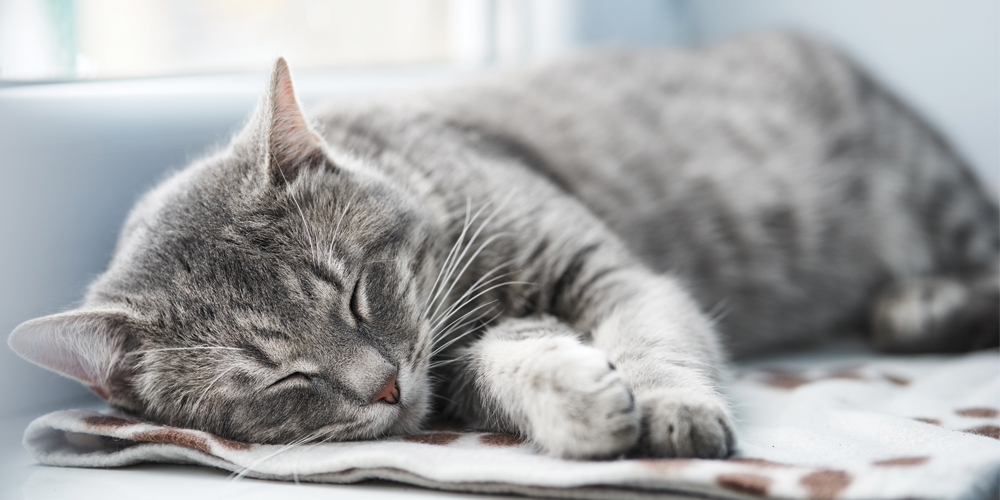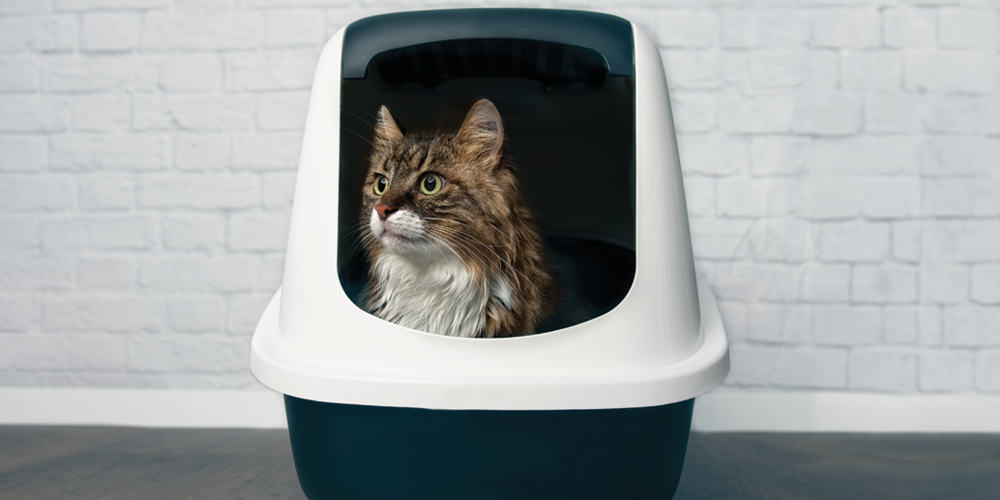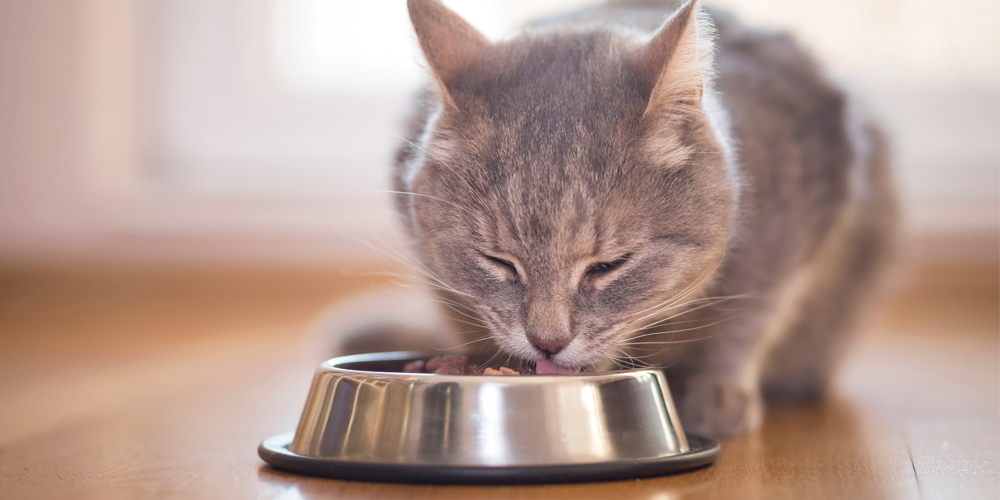By Dr. Natalie L. Marks, DVM, CVJ, CCFP, FFCP-Elite
As a veterinarian, one of my primary goals is to maintain the health and well-being of my patients for as long as possible. For cats in particular, cat parents and caregivers need to have a greater understanding of the role of the kidneys – what they do in the body, what happens to cats when disease develops, and how you, as a cat owner, can look for early signs and be the best “cat-vocate” at home!
Why Focus on the Kidney?
Chronic kidney disease is one of the most common diseases that affects our feline patients. Also known as CKD, it affects approximately 1-3% of all cats.1 However, this disease becomes more common as cats age, with 30-50% of cats over 15 affected.2-4 Although CKD is seen in all cat breeds, studies show it’s more common in Maine Coons, Abyssinians, Siamese, Burmese, and Russian Blue cats.4 But it’s not just a common condition; kidneys play an essential role in the body. They help eliminate waste products, produce hormones that stimulate red blood cell production for oxygen delivery, help with blood pressure and calcium regulation, maintain hydration and electrolyte balance, and filter toxins from the blood. When kidneys fail, it is not only painful and nauseating for our patients but can also be life-threatening.

What Causes CKD?
I wish there were an easy answer here! Unfortunately, identifying the exact cause is difficult because we often see cats when the disease is more advanced. However, some cats are exposed to viruses (like feline infectious peritonitis); others are born with abnormal kidney structures (polycystic kidney disease). Still, others have kidneys that are damaged by inflammation, kidney stones, bacterial infection, and even cancer. While these diseases are often found later in the disease course during diagnostic testing of blood and urine or through radiographs, many cats can experience acute kidney injury very early on. Trauma and toxins can cause sudden and permanent damage to the kidneys without ever being noticed. Ultimately, all of these causes have the same consequence – destruction and scarring of the nephrons, the functional units of each kidney.
Is My Cat at Risk?
I am often asked this question by cat parents, especially those who do not have one of the higher-risk breeds. Studies have found that several factors put cats at higher risk of developing chronic kidney disease. These include being underweight, being a neutered male, living in the United States outside of the Northeast, being over nine years of age, having prior periodontal (dental) disease or cystitis (bladder inflammation), and experiencing inappetence or loss of appetite. Many cats I treat meet these criteria; if any apply to your cat, please note it for your next visit with the veterinarian. However, knowing what kidney disease can look like in your cat is vital for the best chance at earlier detection is also essential.
Signs of CKD
Here’s the challenging part – clinical signs of chronic kidney disease may not always be present in the earliest stages, and cats are masters at disguising illness. This stems from the fact that cats can be predators or prey in the wild, and any signs of weakness make them vulnerable. Yet, once more than 66% of kidney function is damaged, we start to see more classic changes like lethargy, weakness, vomiting, increased thirst and urination, and even ulcers in the mouth. Often, there can already be significant permanent damage once we see signs of possible CKD. This might seem frustrating to a cat parent and equally frustrating to the veterinary team! To combat this, cat parents can watch for two critical signs at home that help significantly with early detection – change in appetite and weight loss.

Appetite Monitoring is Key
Before we talk about monitoring, let’s ensure we are all on the same page about the concept of inappetence. Inappetence has three different forms. The first is anorexia, a complete loss of appetite, and one that is typically used to cover all three types incorrectly. Anorexia can sometimes be more challenging to identify in multi-cat households or with cats that are on automatic feeders. However, two other forms of inappetence often get overlooked or even brushed aside as “normal.” One is hyporexia, which is a decrease in appetite. This can be as little as a 10% change and easy to miss. The other is dysrexia, or a change in the pattern of eating. Think about your cat’s eating routine. Does your cat usually knock picture frames off the nightstand at 4 am, begging for breakfast, but is now taking all day to eat? Even though the same amount of food is being consumed, the change in pattern is a concern and indicates the need for a veterinary visit. We also want to be watching for unexpected weight loss. While weight loss can be found with many different conditions in pets, studies have shown that weight loss could be detected in cats up to 3 years before a diagnosis of chronic kidney disease.6
What’s Next?
If you’ve noticed any of these changes in your cat, especially in appetite, it’s time for an exam. Your veterinarian will want to know what you’re seeing, for how long, and anything else that seems different behaviorally with your cat. The physical exam is the foundation of the visit. We will look at weight trends, body and muscle condition, feel for kidney size and shape, and the health of the rest of the body. Your veterinarian will also recommend diagnostic testing because many clinical signs are vague or can accompany other diseases. The starting point is blood and urine testing, a blood pressure check, and often an X-ray or ultrasound of the kidneys and surrounding organs.
Kidney disease is diagnosed when several blood values elevate despite diluted urine. These are known as BUN (blood urea nitrogen), creatinine, and SDMA (a measurement of a waste protein). The elevated blood results indicate up to 75% loss of kidney function and chronic kidney disease. The diagnostics often find other complications from CKD, like a low red blood cell count (anemia), protein in the urine, and high phosphorus and blood pressure. All of these findings are used to help further classify your cat within the globally recognized guidelines called IRIS staging. This helps us understand what stage (1-4) we are in and what treatment is best and most targeted based on your cat’s needs. It also helps us understand prognosis.
CKD Treatment
Treatment for chronic kidney disease is not the same for every cat. It depends on the stage of illness, complications, and underlying causes that can be identified and resolved. For example, we can make the most difference in the earlier stages of CKD by looking for treatable causes like kidney stones and bacterial infections. This can significantly slow down the progression of the disease. Another core component of treatment for cats in Stage 2 or higher is diet. A dietary change with higher quality but a lower quantity of protein and decreasing phosphorus content is necessary to protect the kidneys. If your cat has shown any of the three forms of inappetence or is not maintaining weight, your veterinarian may strongly recommend an appetite stimulant. This can also help cats transition from an old diet to a new prescription or therapeutic diet. If there is protein in the urine, it is also treated immediately, as untreated protein loss through urine is a significant risk factor for the progression of kidney enzyme elevations in the blood and decreased survival times.7-10
In the later stages of chronic kidney disease, the goal is to manage the complications and support the best quality of life. This often includes oral medication to help increase the number of red blood cells, treatment to reduce high blood pressure, supplements to help normalize phosphorus, potassium, and calcium levels, and fluid therapy given under the skin either in the veterinary hospital or at home consistently to keep your cat hydrated. Appetite stimulants are often continued for long-term support. Frequent rechecks with the veterinary team are critical; continue to communicate with your veterinary team for the best management.
About Dr. Natalie L. Marks, DVM, CVJ, CCFP, FFCP-Elite
Dr. Natalie Marks is an internationally renowned veterinarian and educational consultant with over 20 years of experience as a practicing veterinarian. Dr. Marks is dedicated to helping pet owners and veterinarians work together as a team to provide the best care for their pets’ health and wellbeing. In 1998, she graduated with her bachelor’s degree in Animal Science from the University of Illinois before going on to obtain her Master’s and Doctorate in Veterinary Medicine from the University of Illinois College of Veterinary Medicine. Dr. Marks’ dedication to the field of veterinary medicine has earned her numerous awards and accolades, including the Dr. Erwin Small First Decade Award, Petplan’s Veterinary of the Year in 2012, and America’s Favorite Veterinarian from the American Veterinary Medical Foundation in 2015. In addition to being a familiar face on both local and national media outlets, Dr. Marks has been a lecturer on a variety of topics at conferences like VMX, WVC, and AVMA.
- Brown SA. Linking treatment to staging in chronic kidney disease. In August JR (ed): Consultations in Feline Internal Medicine. St. Louis: Elsevier Saunders, 2010, pp 475-482.
- Polzin DJ, Osborne CA, Adams LG, Lulich JP. Medical management of feline chronic renal failure. In Kirk RW, Bonagura JD (eds): Kirk’s Current Veterinary Therapy XI. Philadelphia: Saunders, 1992, pp 848-853.
- , Polzin DJ, Osborne CA. Clinical progression of early chronic renal failure and implications for management. In August JR (ed): Consultations in Feline Internal Medicine. St Louis: Elsevier Saunders, 2005, pp 389- 398.
- Lulich JP, Osborne CA, O’Brien TD, et al. Feline renal failure: Questions, answers, questions. Compend Cont Educ Pract Vet 1992; 14:127-153.
- Green et al, Risk factors associated with the development of chronic kidney disease in cats evaluated at primary care veterinary hospitals, JAVMA, Feb 1, 2014; 244: 320-327
- Freeman LM, et al. Evaluation of weight loss over time in cats with chronic kidney disease. J Vet Intern Med 2016;30: 1661-1666
- Chakrabarti S, Syme HM, Elliott J. Clinicopathological variables predicting progression of azotemia in cats with chronic kidney disease. J Vet Intern Med 2012; 26:275- 281.
- Jepson R, Brodbelt D, Vallance C, et al. Evaluation of predictors of the development of azotemia in cats. J Vet Intern Med 2009; 23:806- 813.
- Syme HM, Markwell PJ, Pfeiffer D, et al. Survival of cats with naturally occurring chronic renal failure is related to severity of proteinuria. J Vet Intern Med 2006; 20:528-535.
- King JN, Tasker S, Gunn-Moore DA, Strehlau G. Prognostic factors in cats with chronic kidney disease. J Vet Intern Med 2007; 21:906-916.


Share this Quiz